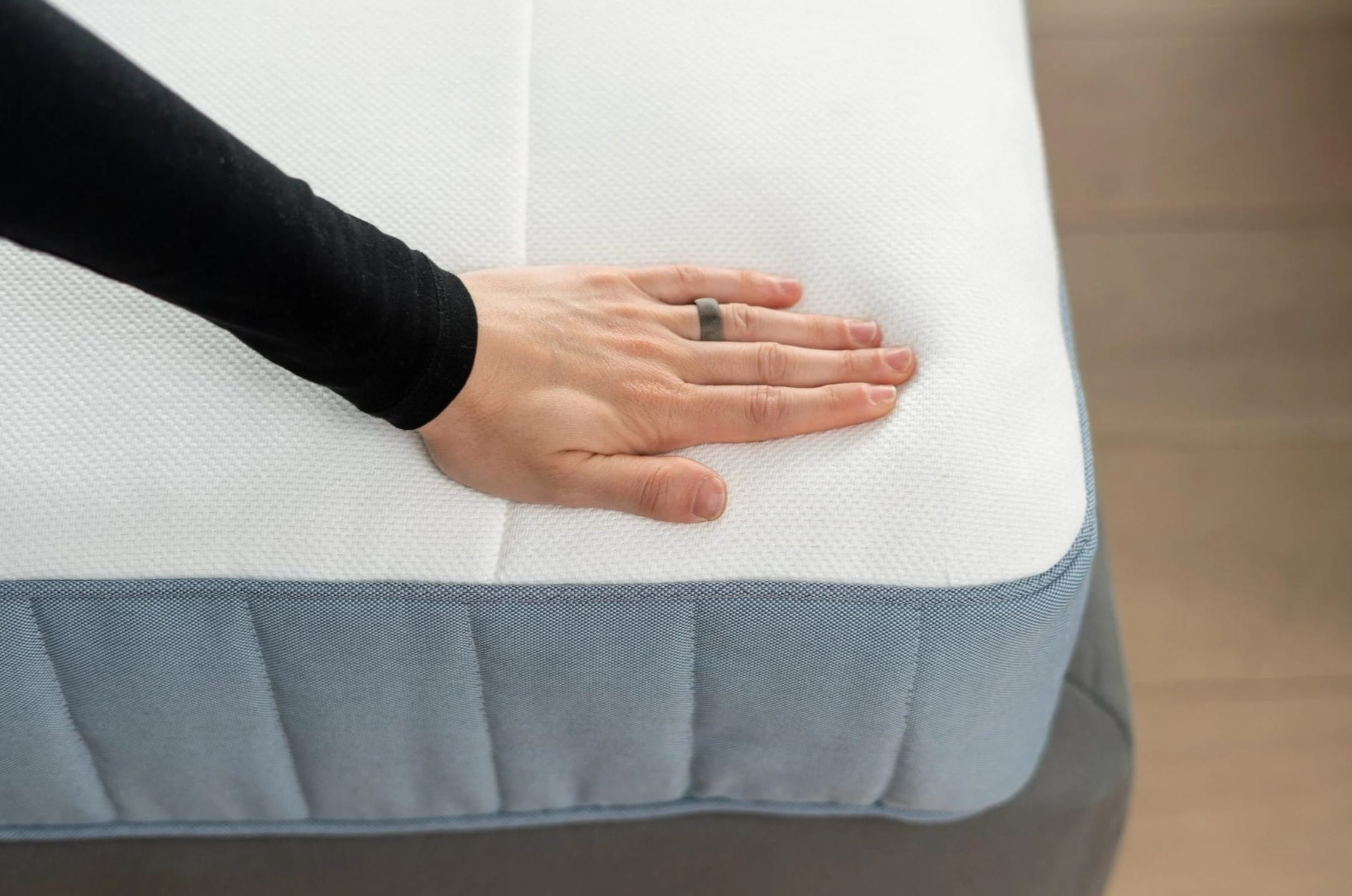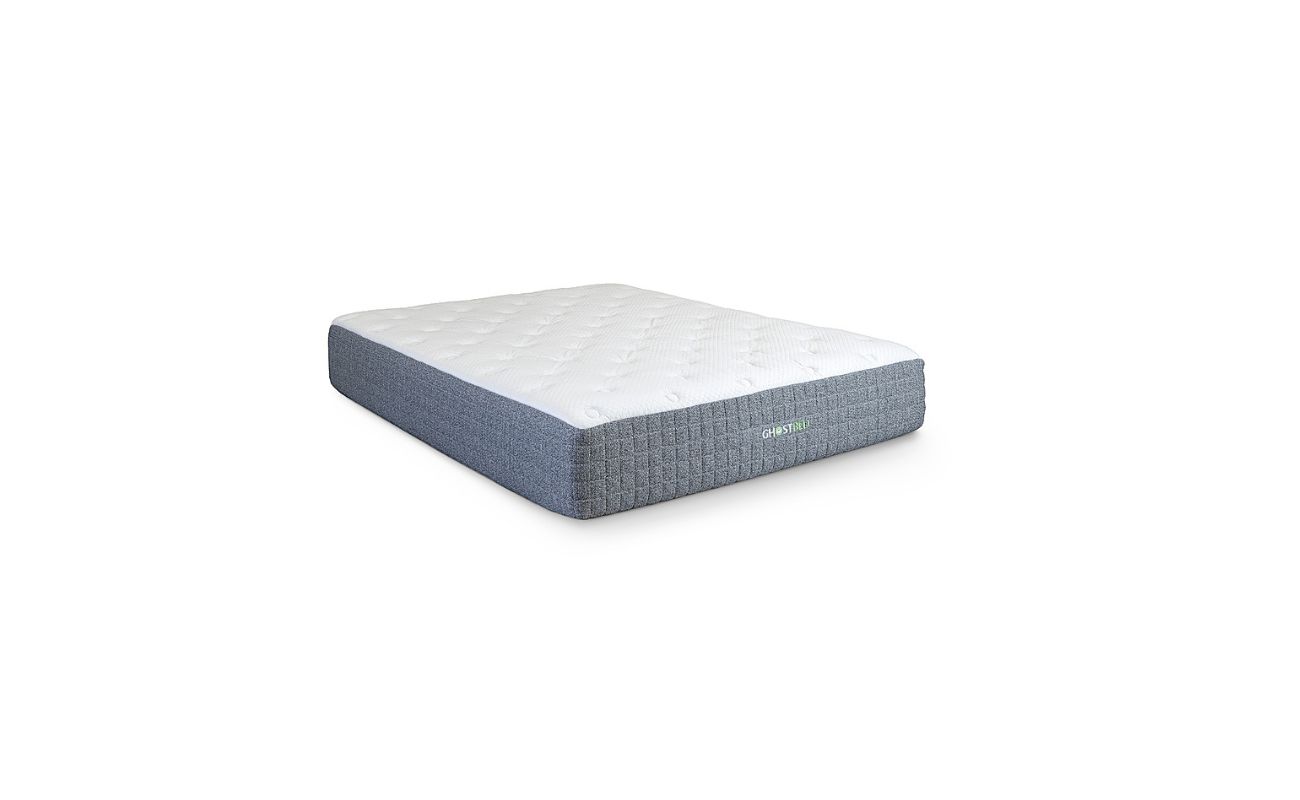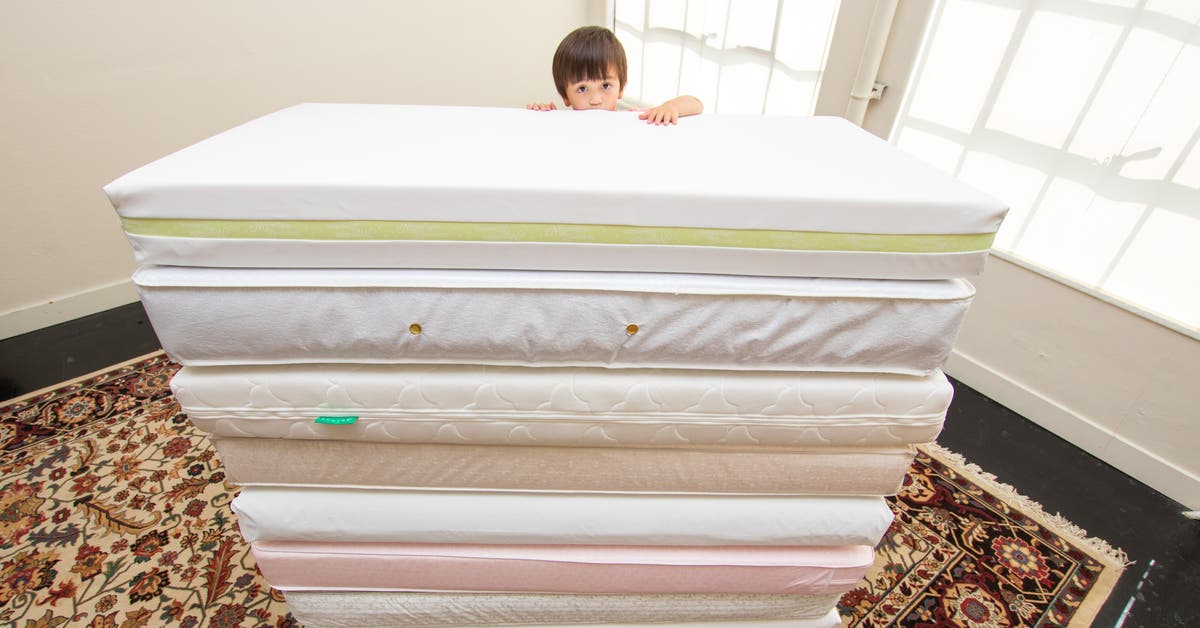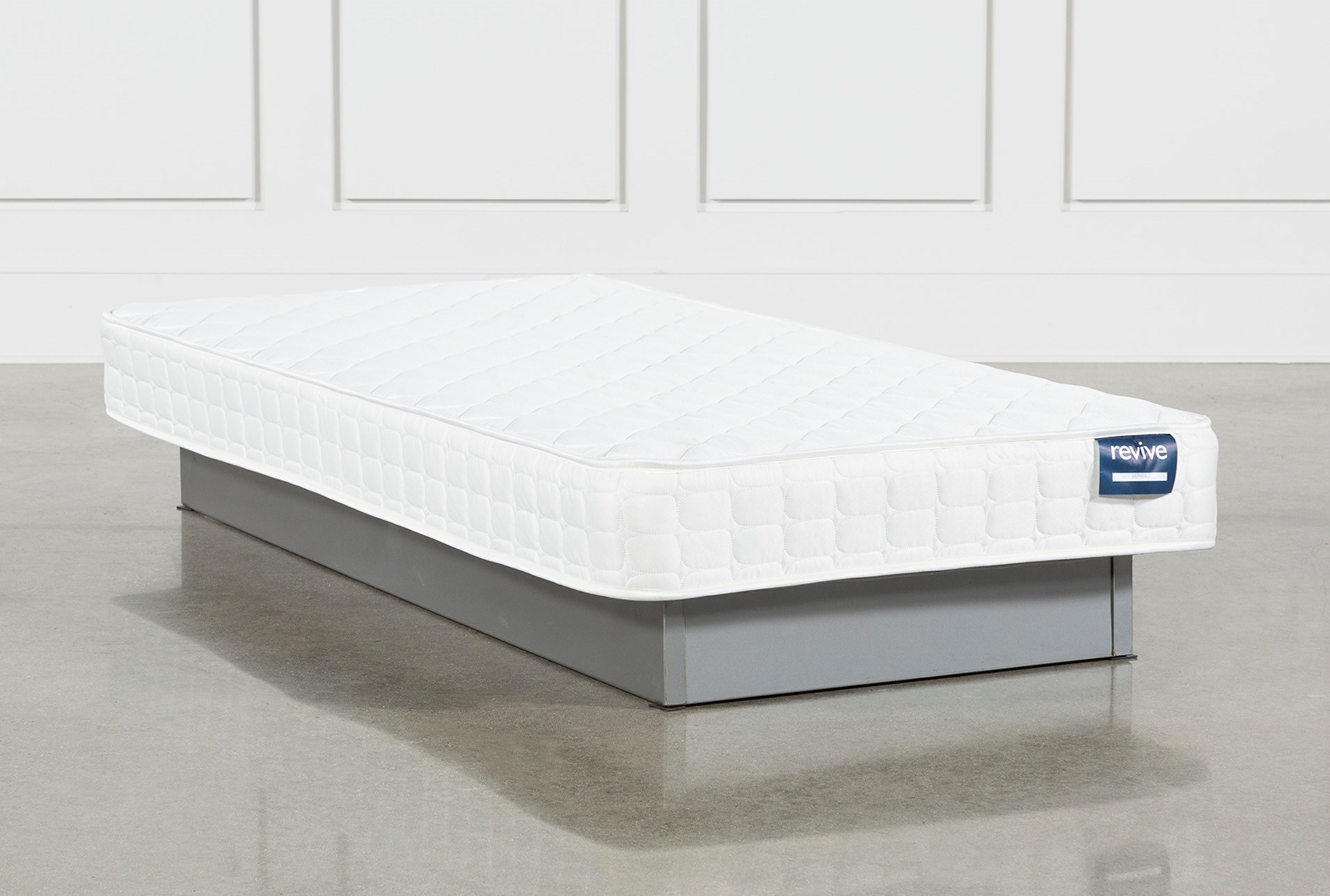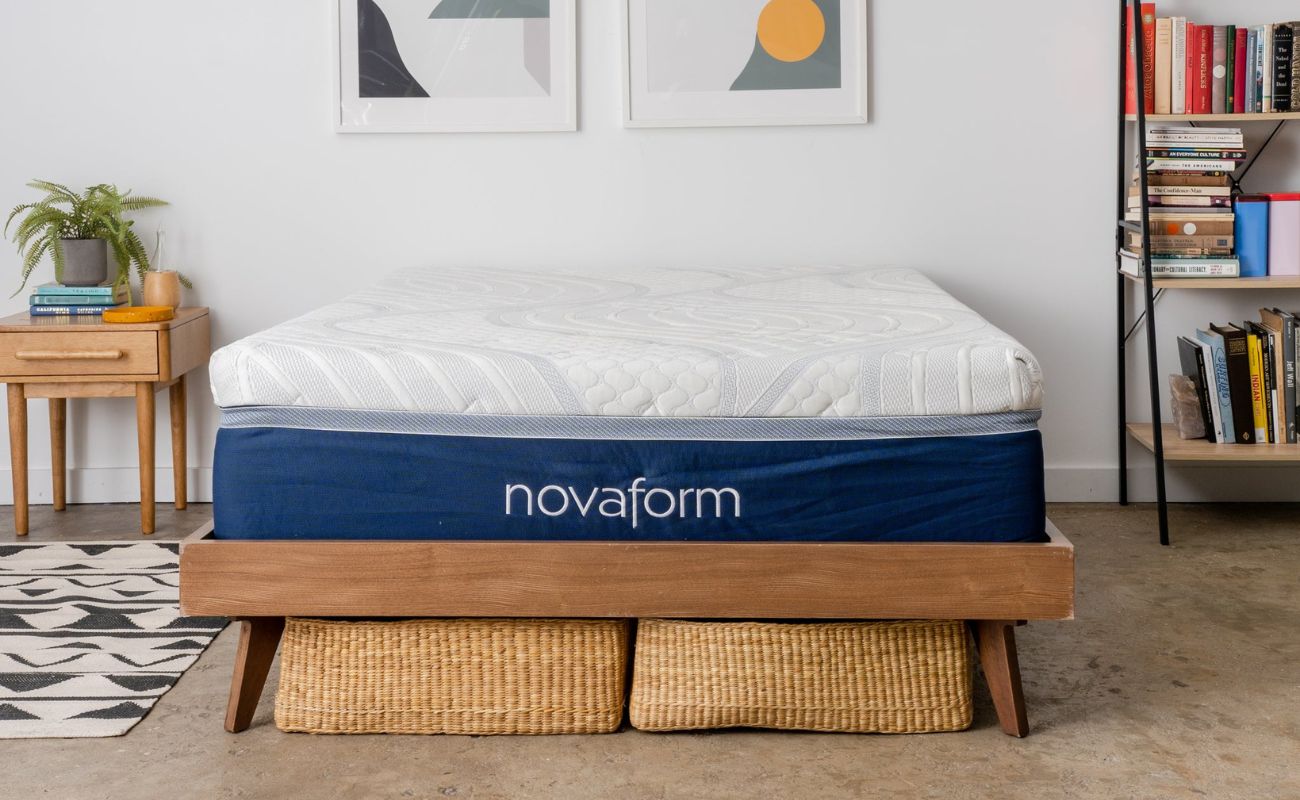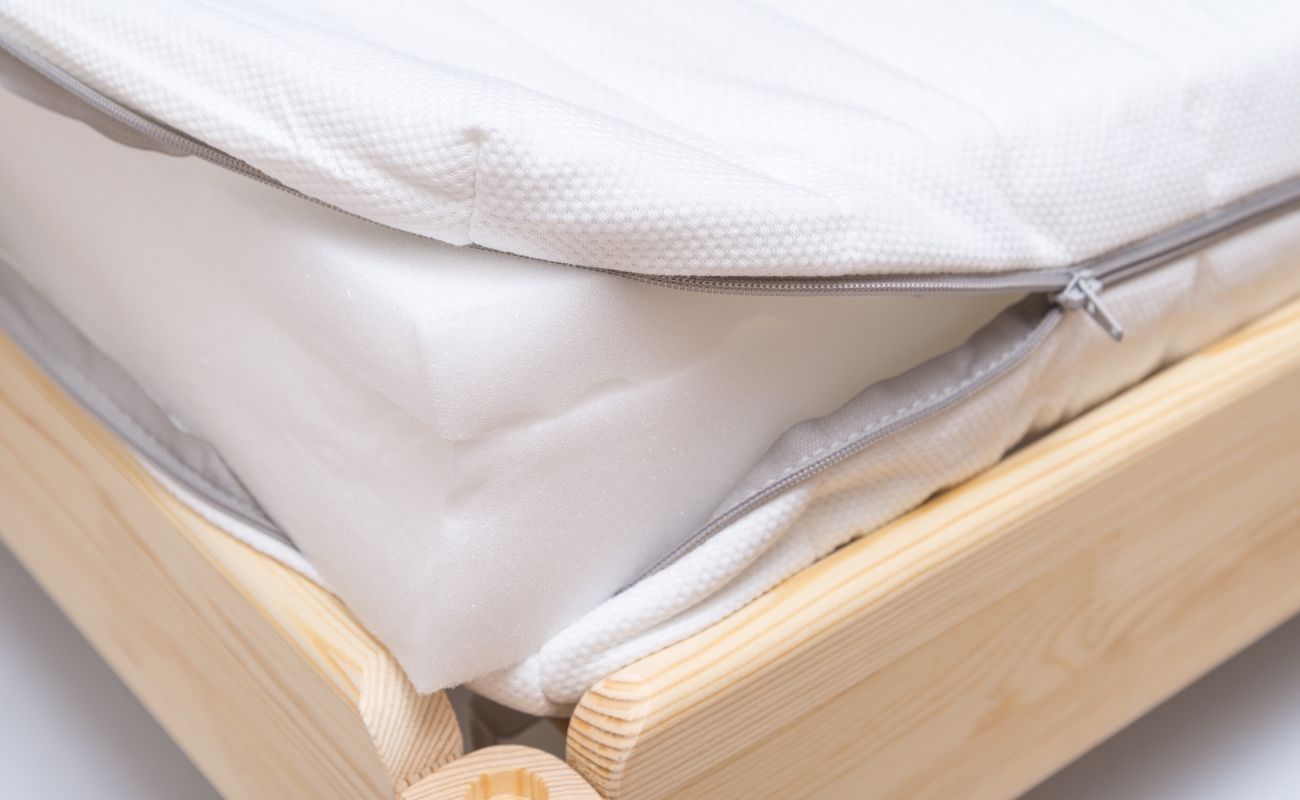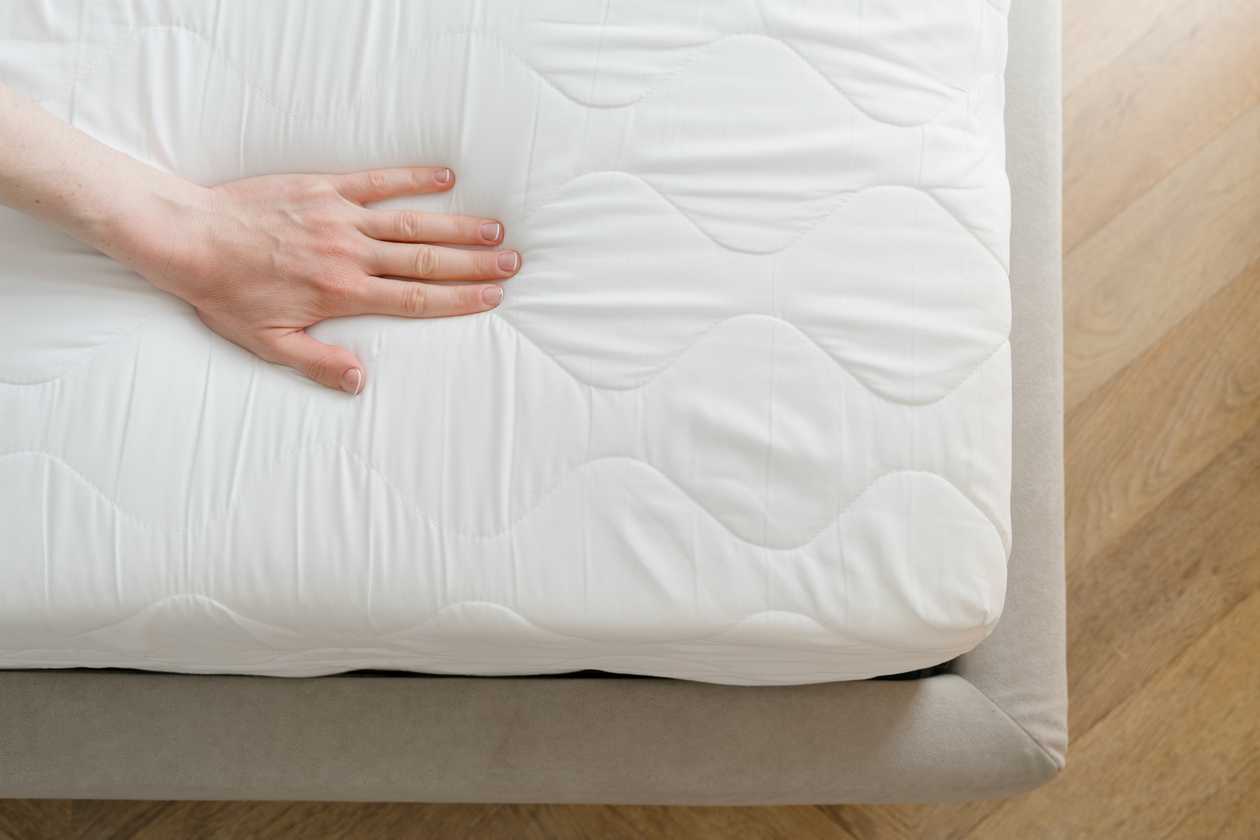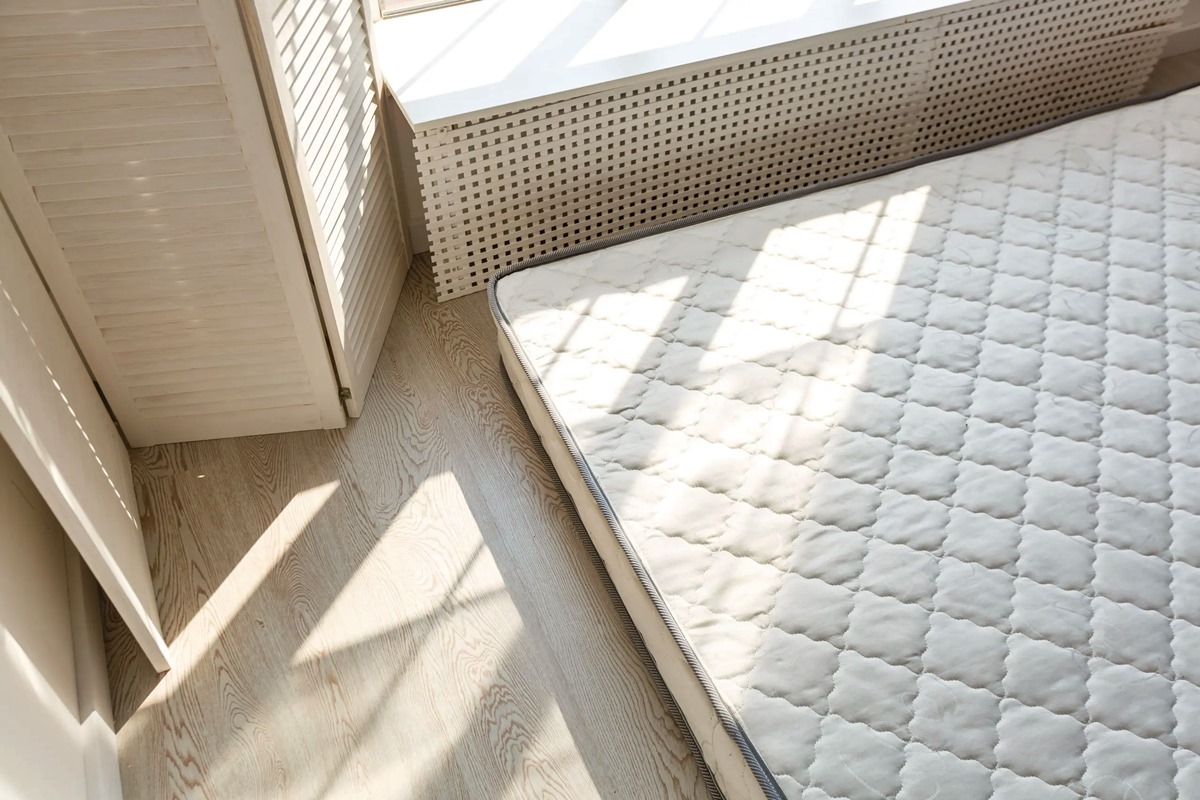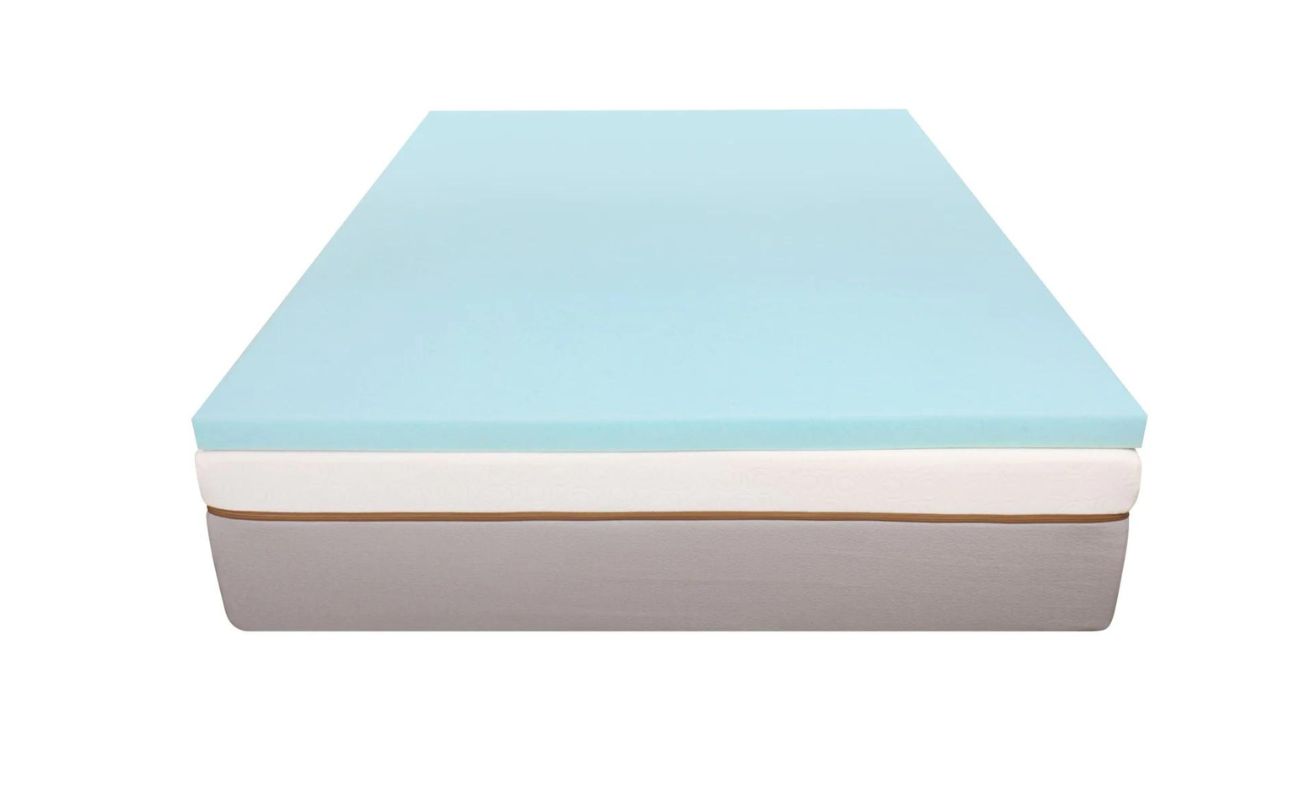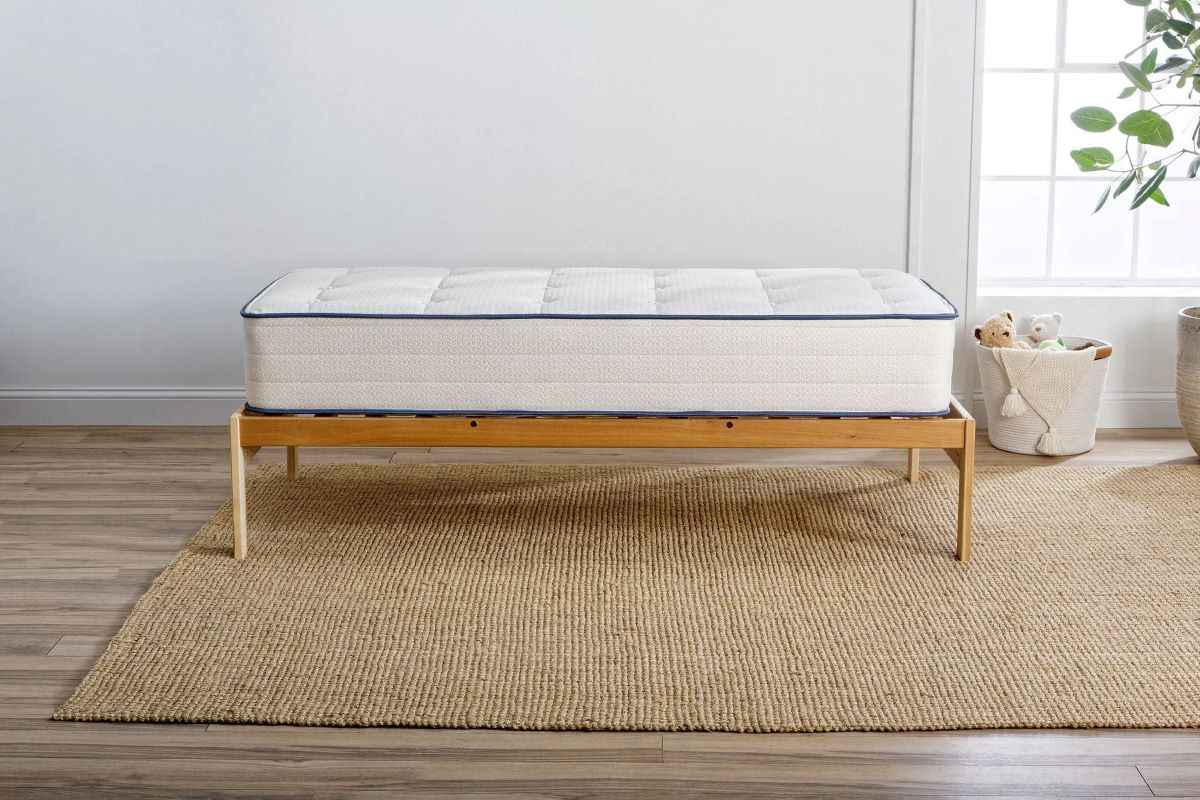Home>Furniture>Bedroom Furniture>How Long To Break In A Mattress


Bedroom Furniture
How Long To Break In A Mattress
Modified: February 17, 2024
Discover how long it takes to break in a mattress for optimal comfort in your bedroom. Check out our expert tips and advice on selecting the perfect bedroom furniture.
(Many of the links in this article redirect to a specific reviewed product. Your purchase of these products through affiliate links helps to generate commission for Storables.com, at no extra cost. Learn more)
Introduction
When it comes to buying a new mattress, there is often a period of adjustment required before it reaches its optimal comfort level. This process, known as breaking in a mattress, involves the bedding materials settling and conforming to your body shape. While it varies from mattress to mattress, understanding the factors that influence break-in time and how to speed up the process can help you enjoy a restful night’s sleep sooner.
Several factors can influence the length of time it takes for a mattress to fully break in. These factors include the type of mattress, the materials used, and even personal preferences. Additionally, some mattresses require a longer period of adjustment compared to others. It’s important to be patient and allow the mattress to fully settle to ensure maximum comfort and longevity.
In this article, we will explore the factors influencing mattress break-in time, discuss the different types of mattresses and their break-in periods, and provide tips on how to speed up the break-in process. We will also explore the signs that your mattress is fully broken in and discuss when it may be time to consider replacing your mattress.
So, let’s dive in and uncover all you need to know about how long it takes to break in a mattress!
Key Takeaways:
- Patience is key when breaking in a new mattress. Factors like mattress type, material quality, and sleeping habits influence the adjustment period. Enjoy enhanced comfort and improved sleep quality once your mattress is fully broken in.
- Consider replacing your mattress after 7 to 10 years or sooner if you experience discomfort. Investing in a new mattress is an investment in your sleep health, ensuring restful sleep and overall well-being.
Read more: How Long For A Mattress To Break In
Factors Influencing Mattress Break-In Time
The break-in time of a mattress can vary depending on several factors. Understanding these factors can help you manage your expectations and know what to look out for during the bedding adjustment period.
1. Mattress Type: Different types of mattresses have varying break-in periods. Memory foam mattresses, for example, often require a longer adjustment time compared to innerspring mattresses. This is because memory foam needs time to conform to your body shape and reach its optimal level of comfort.
2. Material Quality: The quality of the materials used in the mattress construction can also impact break-in time. Higher-quality materials tend to have better resilience and may require less time to fully adjust. On the other hand, lower-quality materials may take longer to settle and provide optimal comfort.
3. Mattress Thickness: Thicker mattresses typically take longer to break in compared to thinner ones. This is because thicker mattresses have more material to adjust and conform to your body shape. It’s important to consider this aspect when purchasing a new mattress.
4. Mattress Firmness: The firmness level of a mattress can also affect the break-in time. A firmer mattress may take longer to fully adjust and provide the desired level of comfort. Conversely, a softer mattress may require less time for adjustment as it conforms more quickly to your body shape.
5. Sleeping Habits: Your sleeping habits and patterns can influence how quickly your mattress breaks in. If you tend to move around a lot during sleep, it can expedite the break-in process as it helps distribute your body weight more evenly across the mattress surface.
6. Room Temperature and Humidity: The environment in which you place your mattress can impact break-in time. Higher temperatures and humidity levels can make the materials more pliable, allowing for a faster adjustment. However, extreme heat or moisture can also degrade the mattress, so it’s important to maintain a comfortable and stable environment.
By considering these factors, you can better understand why your mattress may take a certain amount of time to break in. Remember, the break-in period is normal, and it’s essential to be patient and allow the materials to adjust to your body for optimal comfort and support.
Types of Mattresses and Their Break-In Periods
Not all mattresses are created equal, and different types of mattresses have unique characteristics that influence their break-in periods. Let’s explore some popular mattress types and the average time it takes for them to fully break in.
1. Memory Foam Mattresses: Memory foam mattresses are known for their ability to contour to your body shape and provide excellent pressure relief. However, they typically have a longer break-in period compared to other mattress types. On average, it may take anywhere from 2 to 4 weeks for a memory foam mattress to fully adjust to your body and reach its optimal comfort level.
2. Innerspring Mattresses: Innerspring mattresses have a coil support system topped with layers of padding. These mattresses tend to have a shorter break-in period compared to memory foam. In most cases, you can expect an innerspring mattress to fully break in within 1 to 2 weeks of regular use.
3. Latex Mattresses: Latex mattresses are known for their responsiveness and durability. They typically have a moderate break-in period, which can range from 1 to 3 weeks. Latex mattresses tend to have a more consistent and balanced feel from the beginning, with minimal adjustment required.
4. Hybrid Mattresses: Hybrid mattresses combine the support of innerspring coils with the comfort of memory foam or latex layers. The break-in period for hybrid mattresses can vary depending on the specific materials used. On average, it may take 1 to 3 weeks for a hybrid mattress to fully adjust, with memory foam hybrids potentially taking slightly longer compared to latex hybrids.
It’s important to note that these are average estimations and can vary based on individual factors such as body weight, room temperature, and mattress quality. Additionally, some people may adjust to a mattress more quickly or may require a longer break-in period based on personal preferences.
During the break-in period, it’s recommended to sleep on the mattress regularly to allow the materials to settle and adjust. This will help ensure that you experience the full benefits and comfort of your chosen mattress type.
Can You Speed Up the Break-In Process?
While the break-in process is necessary for your mattress to reach its optimal comfort level, there are a few steps you can take to potentially speed up the adjustment period. Here are some tips to consider:
1. Rotate and Flip the Mattress: If your mattress allows for it, rotating and flipping it can help distribute the weight and pressure more evenly across the surface. This can expedite the break-in process by encouraging the materials to conform and settle faster. However, not all mattresses are designed to be flipped, so be sure to check the manufacturer’s instructions.
2. Use the Right Foundation: A solid and supportive foundation can have a significant impact on the break-in time of your mattress. Ensure that you are using a compatible and suitable foundation or bed frame that provides proper support. This will help the mattress adjust more quickly and effectively.
3. Sleep on the Mattress Regularly: Consistently sleeping on the mattress will help accelerate the break-in process. The more you use the mattress, the quicker it will adjust to your body shape. Avoid using a different bed or sleeping elsewhere during the break-in period, as this can delay the adjustment process.
4. Apply Light Pressure: Applying light pressure on specific areas of the mattress can help the materials conform more quickly. Gently pressing down and massaging areas that feel stiff or less comfortable can encourage the foam or padding to soften and adapt to your body shape.
5. Allow for Proper Air Circulation: Proper air circulation is essential for the break-in process. Remove any protective covers or sheets that may restrict airflow and hinder the materials from settling. Allowing the mattress to breathe will enable it to adjust and conform more efficiently.
While these tips may potentially speed up the break-in process, it’s crucial to remember that some mattresses simply require more time to fully adjust. It’s essential to balance your desire for a quick break-in with the need to allow the materials to settle naturally for long-term comfort and durability.
If you have any concerns about the break-in period or if you feel prolonged discomfort, it’s always best to reach out to the manufacturer or retailer for guidance. They can provide specific recommendations or address any questions or issues you may have.
It typically takes 30-90 days to fully break in a new mattress. To speed up the process, try walking on the mattress or using a mattress topper to soften it up.
Signs That Your Mattress Is Fully Broken In
As you patiently wait for your mattress to break in, it’s important to know the signs that indicate it has reached its fully adjusted state. Here are some common signs that your mattress is fully broken in:
1. Enhanced Comfort: One of the main signs that your mattress is fully broken in is when you experience enhanced comfort while sleeping. The mattress should conform to your body shape and provide the desired level of support and pressure relief. You’ll notice that you wake up feeling more rested and without any discomfort or pain.
2. Improved Sleep Quality: When your mattress is fully broken in, you’ll likely notice an improvement in your sleep quality. You might find it easier to fall asleep, experience fewer disturbances during the night, and wake up feeling refreshed and rejuvenated. A properly broken-in mattress promotes healthy and uninterrupted sleep.
3. Consistent Feel: A fully broken-in mattress will have a consistent feel across the entire surface. There should be no noticeable lumps, sags, or uneven areas. When you lie down on the mattress, it should provide a uniform level of comfort and support from edge to edge.
4. Reduced Motion Transfer: If your mattress has excellent motion isolation, it means it has fully adapted to your body movements. This results in minimal motion transfer, so you and your partner won’t be disturbed by each other’s movements during sleep. Reduced motion transfer is a sign that your mattress has fully adjusted and is providing optimal support.
5. Extended Lifespan: A fully broken-in mattress often has an extended lifespan. It means that the materials have settled properly and are less prone to premature wear and tear. As a result, your mattress can offer long-lasting comfort and support for years to come.
While these signs indicate that your mattress is fully broken in, it’s important to note that mattresses can wear out over time. Even a fully adjusted mattress will eventually lose its effectiveness and may need to be replaced. Keeping an eye out for any signs of wear, such as visible sagging or a decrease in comfort, can help you determine when it’s time for a new mattress.
By paying attention to these signs and regularly assessing the condition of your mattress, you can ensure that you continue to enjoy a comfortable and restful sleep experience.
Read more: How To Break In A Mattress
How Long Should You Wait Before Replacing a Mattress?
While mattresses are designed to provide long-lasting comfort and support, they are not meant to last forever. Over time, mattresses can lose their effectiveness and may require replacement to maintain a healthy sleep environment. So, how long should you wait before replacing your mattress? Here are some factors to consider:
1. Lifespan: The typical lifespan of a mattress varies depending on the type and quality of the mattress, as well as how well it has been cared for. In general, you can expect a good-quality mattress to last between 7 and 10 years. However, some higher-end mattresses may have a longer lifespan of up to 12 to 15 years.
2. Comfort and Support: Pay attention to changes in the comfort and support of your mattress. If you start to notice sagging, uneven areas, or a decrease in overall comfort, it may be a sign that your mattress has worn out and needs replacement. A mattress that no longer provides adequate support can lead to poor sleep quality and discomfort.
3. Pain or Discomfort: If you consistently wake up feeling achy, sore, or experiencing back, neck, or joint pain, it may indicate that your mattress is no longer providing the necessary support. Sleeping on an unsupportive mattress can lead to improper spinal alignment and pressure points, causing discomfort and pain.
4. Allergies or Hygiene Issues: Over time, mattresses can accumulate dust mites, allergens, and bacteria, which can worsen allergy symptoms or contribute to poor indoor air quality. If you’ve tried cleaning and maintaining your mattress but still struggle with allergy symptoms or notice a persistent odor, it may be time to consider replacing it.
5. Changes in Lifestyle or Body Needs: Lifestyle changes, such as weight gain, pregnancy, or changing sleep preferences, can impact the suitability of your current mattress. As your body changes, you may require a different level of support or a mattress with specific features to ensure optimal comfort and spinal alignment.
It’s important to note that these are general guidelines, and individual factors may influence when you should replace your mattress. If you’re unsure whether it’s time to replace your mattress, it may be helpful to consult with a sleep specialist or mattress retailer who can provide professional guidance based on your specific situation.
Remember, investing in a new mattress is an investment in your sleep quality and overall well-being. By replacing your mattress when necessary, you can ensure that you continue to enjoy a restful and rejuvenating sleep experience.
Conclusion
Choosing and breaking in a new mattress is an important process that directly impacts your sleep quality and overall well-being. Understanding the factors that influence break-in time, the different types of mattresses and their break-in periods, and how to speed up the process can help you navigate this journey with ease.
Remember that each mattress is unique, and the break-in period can vary based on factors such as mattress type, material quality, and personal preferences. It’s important to be patient and allow your mattress to fully adjust to your body shape for optimal comfort and support.
While you wait for your mattress to fully break in, pay attention to signs that indicate it has reached its adjusted state. Enhanced comfort, improved sleep quality, consistent feel, reduced motion transfer, and an extended lifespan are all positive indicators that your mattress is fully broken in.
However, even a well-adjusted mattress will eventually wear out over time. As a general guideline, consider replacing your mattress after 7 to 10 years, or sooner if you experience pain, discomfort, or notice significant changes in its condition.
Investing in a new mattress is an investment in your sleep health. By ensuring you have a supportive and comfortable sleep surface, you can enjoy restful sleep, enhance your overall well-being, and wake up feeling refreshed and rejuvenated each day.
Now armed with the knowledge of how long it takes to break in a mattress and signs that indicate it’s fully broken in, you can confidently embark on your mattress buying journey and enjoy the benefits of a well-adjusted and comfortable sleep surface for years to come.
Frequently Asked Questions about How Long To Break In A Mattress
Was this page helpful?
At Storables.com, we guarantee accurate and reliable information. Our content, validated by Expert Board Contributors, is crafted following stringent Editorial Policies. We're committed to providing you with well-researched, expert-backed insights for all your informational needs.
